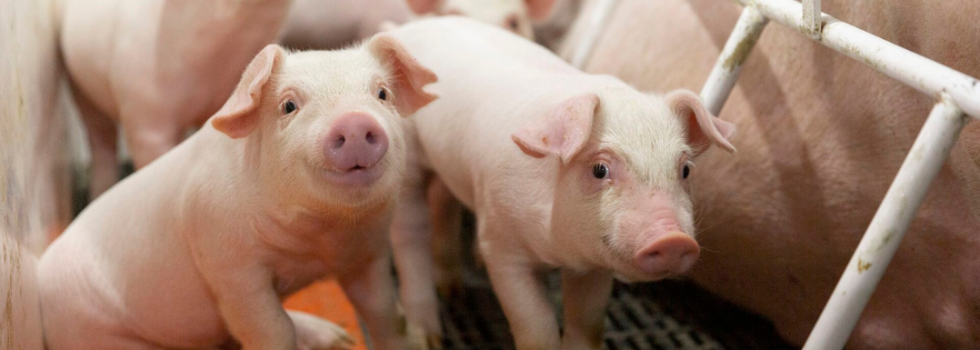Promotional Features
Mitigating nitrogen loss in pig farming: Enhancing performance, feed efficiency and sustainability
Pig production is a vital component of the global livestock industry, providing a significant source of protein for human consumption worldwide.
However, pig farming poses certain challenges. Among these, the loss of nitrogen compounds, primarily in the form of ammonia (NH3) and nitrous oxide (N2O), stand out as areas that could be improved on-farm.
Nitrogen is an essential nutrient for pig growth and development, playing a crucial role in protein synthesis and metabolic processes. However, inefficient utilization of dietary nitrogen can result in excess nitrogen excretion, which can lead to resource wastage.
In addition, ammonia emissions from pig facilities and nitrous oxide emissions (arising primarily from manure management) are potential sources of environmental pollution and can be harmful to both animal and human health. Nitrogen loss can also compromise pig performance and feed efficiency – and consequently, economic viability – in pig farming operations.
As the global population continues to grow and dietary preferences evolve, the importance of sustainable and efficient pig production practices becomes increasingly apparent in meeting the rising demand for high-quality protein while minimizing environmental impacts. Therefore, understanding nitrogen loss from pig production is essential for the adoption of mitigation strategies that enhance pig performance and feed efficiency while also ensuring environmental responsibility. These strategies will safeguard the long-term viability and profitability of pig farming operations.
Understanding nitrogen loss
Several factors contribute to nitrogen loss in pig production, ranging from dietary considerations to manure management practices. For example:
Dietary considerations
- Dietary protein levels When pigs consume more protein than they require for growth and maintenance, the excess nitrogen is excreted in urine and feces, contributing to nitrogen pollution. Inefficient digestion and absorption of dietary nutrients, particularly protein, can result in undigested nitrogen being excreted in pig manure. Factors such as feed quality, ingredient digestibility, and gut health influence nutrient utilization and subsequent nitrogen losses.
- Feed conversion efficiency Lower feed efficiency results in higher nitrogen losses per unit of pig production, highlighting the importance of optimizing feed management practices.
Manure management practices
- Manure handling and storage Improper manure handling and storage practices can increase nitrogen losses through volatilization, leaching and runoff. Factors such as storage duration, temperature, aeration and nutrient content influence the extent of nitrogen loss from manure storage facilities.
- Ammonia volatilization Ammonia is released when nitrogen in manure undergoes microbial decomposition, particularly under anaerobic conditions. Factors such as temperature, pH, and moisture content influence the rate of ammonia volatilization from pig manure.
Addressing these key drivers of nitrogen loss requires a holistic approach that blends optimal nutrition and handling practices with the latest technological innovations.
Benefits of utilizing feed additives in pig feed to mitigate nitrogen loss
Feed additives are a crucial piece of the nutrition puzzle. For example, certain yucca-based dietary supplements have been shown to boost pig performance and nitrogen efficiency by promoting gut health and optimizing nutrient digestibility and absorption.
One such solution is Alltech’s De-Odorase®, a natural product formulated from select extracts of Yucca schidigera. It was primarily designed to reduce ammonia and carbon dioxide concentrations and air microorganism counts in pig barns, creating a healthier environment for the animal, the farmer and the community.
It is also designed to reduce odor, and research from Alltech suggests that this can support reduced stress levels among pigs, which in turn can promote feed intake, growth rates and reproductive performance.
The performance benefits from supplementing De-Odorase in feed have been shown in several research and commercial trials, with studies reporting improvements in daily liveweight gain and feed efficiency (Figure 1 and 2) and a reduction in days to slaughter (Figure 2).
Mean house ammonia levels (ppm) Mean daily liveweight gain (g)
Figure 1: De-Odorase inclusion significantly reduced and maintained ammonia levels while improving weight gain.
Effect of De-Odorase on pig performance Effect of De-Odorase on urine ammonia content
Figure 2: De-Odorase inclusion decreased urine ammonia while improving performance.
More recent research work in the US, which looked at the effect of supplementing nursery pig diets with 125 ppm of De-Odorase from days 0 to 21 post-weaning, shows that pigs fed De-Odorase-supplemented diets sustained a higher average daily feed intake (ADFI) from days 22 to 38 after weaning.1 As a result, average daily gain (ADG) increased, leading to heavier final body weights. In a subsequent study in grower-finisher pigs, De-Odorase supplementation was similarly shown to increase ADFI and thus ADG.2
In addition to promoting enhanced pig performance, De-Odorase supports better nitrogen management in manure by facilitating the conversion of organic nitrogen compounds into more stable forms. This not only reduces nitrogen losses through volatilization but also improves the nutrient content and agronomic value of manure as a fertilizer. Consequently, De-Odorase contributes to more efficient nutrient cycling in agricultural systems, supporting soil health and crop productivity while minimizing environmental impacts such as nitrogen runoff and eutrophication of water bodies.
The best use of De-Odorase for pig performance, ammonia control and manure management is as a feed additive, with a recommended inclusion rate of 4 ounces De-Odorase per ton of finished feed (120-125 grams per tonne).
Benefits of De-Odorase for pigs
Overall, while De-Odorase is primarily employed for odor control purposes, its potential to positively influence pig performance and nitrogen retention underscores its value as a multifunctional additive in pig farming operations.
Author: Dr. Hazel Rooney, Alltech
References
1. Soto, J.; Cemin, H.; Hart, M.; et al. (2024). PSVI-21 The effects of soybean meal concentration and Yucca schidigera extract supplementation on growth performance of nursery swine. Journal of Animal Scienc., Volume 102, Issue Supplement_2, Pages 321–322.
2. Soto, J., et al. Unpublished, Dec. 2023. Leavenworth Livestock Research Center, Sleepy Hollow, MN, USA.








